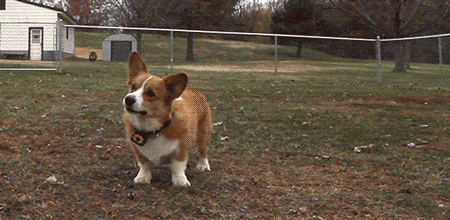Brain with obstacles. We open our eyes and look into the labyrinths of our consciousness.

The simplest definition of success: setting, striving and achieving a goal.
The share of people who successfully achieve their goals is less than 10%. Only 8% of New Year's promises are fulfilled.
Selling products for self-realization and motivation is a multi-billion dollar market. These seminars and trainings help their authors reach million profits, but do not help achieve goals. The success comes all the same 10%.
')
There are many methods to achieve goals. Some of them are confirmed by scientific research, but by themselves they do not lead to success.
The main key to success is the person who achieves it.
What is important is not the amount of knowledge we have received, but how we apply it. And success does not depend on expensive training or a cool coach, but only on us.
The main difference between those 10% of the winners is not in the genes or upbringing: they don’t go out of the way, they work to achieve the goal and don’t give up if something goes wrong. They act.
Action is an integral part of success.
Any task requires action, and their beginning and end - in the brain. Our brain is working to achieve goals and objectives, but there are many barriers. About them, or rather how to manage them, and tells the book.
Book structure

The book is divided into seven chapters, in each of them one of the barriers is disassembled, to which seven strategies for overcoming it are given.
Each of the chapters is divided into five parts:
- What a barrier and what it is.
- Confession with stories and examples; how to notice the barrier and its detailed description.
- Hidden mechanism; about malfunctions of the brain, leading to the formation of a barrier.
- Side effects; about the consequences for health and psyche.
- How to overcome the barrier; about strategies to help cope with the obstacle.
Self doubt
The hidden mechanism: the inability to suppress fear
 Ivan Vasilyevich is also plagued by vague doubts.
Ivan Vasilyevich is also plagued by vague doubts. What is it
Doubt in oneself is a fundamental barrier that prevents us from taking action. Its basis is fear.
When we doubt ourselves, our skills and abilities, our attention switches from actions to self-defense. In the end - a dead end.
Objective awareness of their strengths and weaknesses is an important element of success. In contrast, doubts put a fence around ambitions and constantly undermine us.
Awareness leads to action, and doubt leads to inaction.
How to notice the trap
The first sign of self-doubt is that we hesitate. If we are ready to take a step, but do not make it - it is worth thinking. Fear activates an extended hit-and-run reaction; it consists of four actions: freeze, fight, run and surrender.
Side effects
Example:
The company plans to reduce. The first reaction will be - stand still. This is necessary to assess the situation.
After we will choose: "beat" or "run." It may be worth competing for your workplace and try to improve your performance, become a more active employee and show your value to the management. If this is not possible - it is worth preparing for the dismissal, to find a new place of work.
If neither run nor fight fails - surrender. Leaving everything as it is, perhaps, everything will be decided without us or will pass by.
This strategy has helped humanity survive, but now most of the threats have changed, and it has become ineffective.
Moreover, the activation of these reactions does not even require a real threat, it’s enough just to think that the threat exists.
Perhaps there is no danger, but the man has already surrendered.
Strategies to overcome self-doubt
Self-doubt comes from fear. In order to cope with the excessive reaction of the brain to fear, you need to periodically put yourself in situations in which it is most powerful. After repeated collisions, the brain will no longer react excessively.
Dealing with doubt - increasing self-confidence
- Do not be shy. We praise and convince ourselves of our own value.
- We look the monster in the eye. Breaking the barrier of self-doubt: find out what we are afraid of and study our fears.
- We do not know - we will find out. Self-doubt is directly related to the lack of information - the suspense scares.
- We train and get better. As you improve in some business, there will be less doubt and more self-confidence.
- Imitate successful. If we take as an example people who have succeeded in the field of interest to us, and to imitate them, confidence will increase and it will be easier to overcome doubts.
- Staying away from skeptics: their gloomy predictions trample self-confidence.
- Let the words do not disagree with the case.
Procrastination
The hidden mechanism: the inability to initiate action

As soon as all pencils are sharpened, it will be possible to work, but probably already tomorrow ...
What is it
The main tool of success is action.
Procrastination leads to delays; to succumb to it is the same as doing nothing at all.
We can justify ourselves endlessly and invent ingenious excuses, but things will not be done, and goals will not be achieved.
How to notice the trap
Primary action: I save everything for later
Depending on the task, we can postpone indefinitely, even to infinity.
Key features:
- We wait until the very last second; sure that we have time, but we want more time.
- We begin to work, but much later than we were going to, and we are still more nervous than we work and we feel a sense of guilt.
- We find too little time for important things and a lot of time for everything but the important, as well as the reason to wait for the right moment.
Side effects
The consequences of regular procrastination are enormous: the ideas remain in the head and are not realized, and so that we are not going to do it we are not doing it.
If you do nothing, then dreams will not come true. Each of them can turn into a nightmare and morally put pressure on us.
Coping strategies
- We fill gaps in skills. We are learning new things, reassigning affairs, switching to our specialization.
- We are determined with options. With a lack and lack of clarity of options, we clarify the situation, brainstorm, make inquiries and ask for help. And if there are many options, then we define priorities and create a “do not” list.
- We specify possible results. We list the advantages, visualize, watch other people "in the subject."
- Coping with the novelty. We put the matter in the schedule, just start to act, do something every day and use the routine.
- Coping with excessive emotions.
- The significance is found. We keep a diary of actions, check the “do not do” list, draw a line from A to B, or draw a mindmap, summarize the advantages.
- We make the budget of resources. We designate target dates, divide the case into stages, set firm limits.
A more detailed article on prokkination, on Habré
Impatience
The hidden mechanism: the inability to restrain the reaction

What is it
An important element of success is to do everything on time. If you start to act too late, we will miss the chance. If it is too early, then a false start will occur. It is necessary to choose the right time and wait when it is necessary. Impatience requires a lot of energy, interferes with planning and thinking through actions.
How to notice the trap
Primary action: I'm in a hurry
The main signs of impatience:
- We are spontaneous and act impulsively, making plans binds us, and excitement interferes with careful thinking.
- We really appreciate our time and we love fast results, we hate distant prospects and do not tolerate slow people. We also do not understand deferred pleasure.
- Life goes by quickly, and we constantly struggle with leaking minutes, at the same time getting older, but all things seem urgent to us.
Side effects
Not only people who experience it suffer from impatience, but also the quality of work, relationships, and financial condition.
For impatient people, waiting is unbearable. To alleviate the torment, we begin to hurry, but the number of errors increases due to haste. Our brain is not able to work faster than it works, more precisely, too, so you have to go back and finish the job, or correct errors.
Often, impatience forces one to settle for less, but now, rather than for more, but later. When we cannot cope with waiting, we are only interested in the immediate result - there is no question of long-term prospects.
Also, because of impatience, we are constantly under stress, and this affects our cardiovascular system and lowers our self-esteem.
Impatience strategies
- We win the wait and do not soar in the clouds.
- We win the wait and invest in the long term.
- Choose quality, not speed.
- We carry out all the cases and stages in order.
- Multiply the required time by three.
- We develop the value of deferred remuneration - wait and get more.
- We stop and give ourselves the opportunity to catch our breath.
Briefly about the other mental traps described in the book:
Multitasking
Primary action: I deviate from the topic.
The hidden mechanism: the inability to manage attention
Inflexibility
Primary action: I resist change.
The hidden mechanism: lack of mental flexibility
Perfectionism
Primary action: I get stuck.
The hidden mechanism: the inability to prioritize
Negativism
Primary action: I complain.
Hidden mechanism: inability to reason
Conclusion:
H2O ~ 30%
The book is interesting, it clings to the living with its theme. Each of us is at least in one trap. Starting to understand, it is easy to understand which of the barriers is the closest to us - it will be the most difficult to read about him, since everything written will touch the quick.
For myself, I found two minuses in the book: the author writes about barriers, but uses “you” and “you” instead of “we” and “us.” It seems that these barriers do not concern him, and he is above such minor problems. Perhaps it is a matter of translation.
The second minus in the "wooden" heroes of confessions. Reading about them and their problems, the impression remains that they are here only for the beauty of the story - I don’t believe in the reality of the characters.
Finally, three final advice from the author:
- Fighting obstacles is a deterrent goal that can enmesh you with networks of perfectionism. Better think about how to improve your skills.
- This book gives you 49 strategies. Some of them have subcategories. Although it may seem that there are too many tips and it is difficult to remember and apply them - together they give more choice. Some will be more attractive and suitable for you. After you read everything: select the three favorite strategies you want to learn; memorize them; apply as often as possible.
- If only one thought could fit in this book, I would say the following: always know your goal, and what to do.
All good! And look at your feet!
 Posted by: Theo Tsausidis
Posted by: Theo TsausidisBrain with obstacles. 7 hidden barriers that prevent you from achieving goals
Original: Brainblock. Overcoming the 7 Hidden Barriers to Success
Publisher: Mann, Ivanov and Ferber, 2017
Source: https://habr.com/ru/post/401501/
All Articles